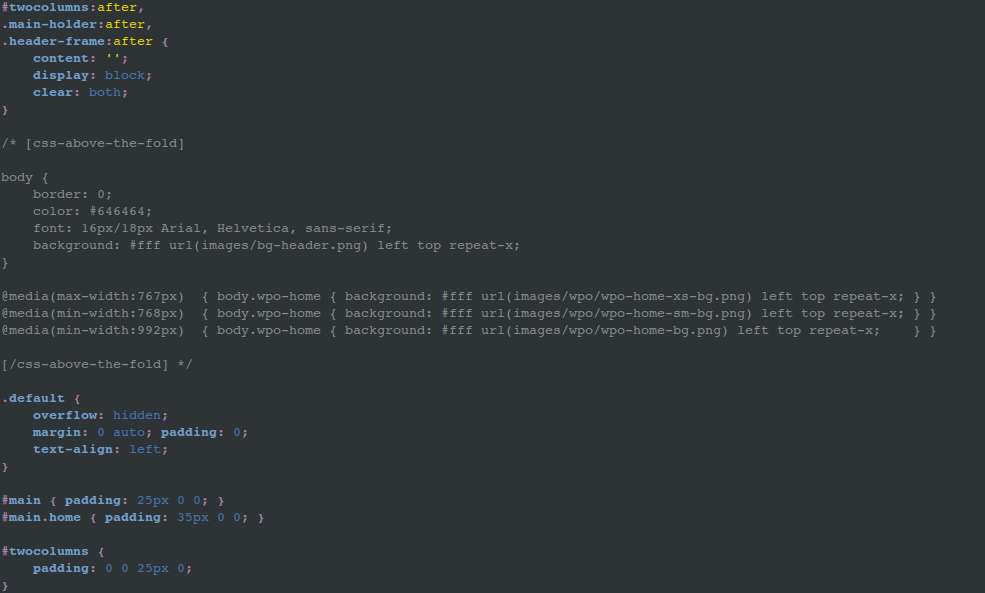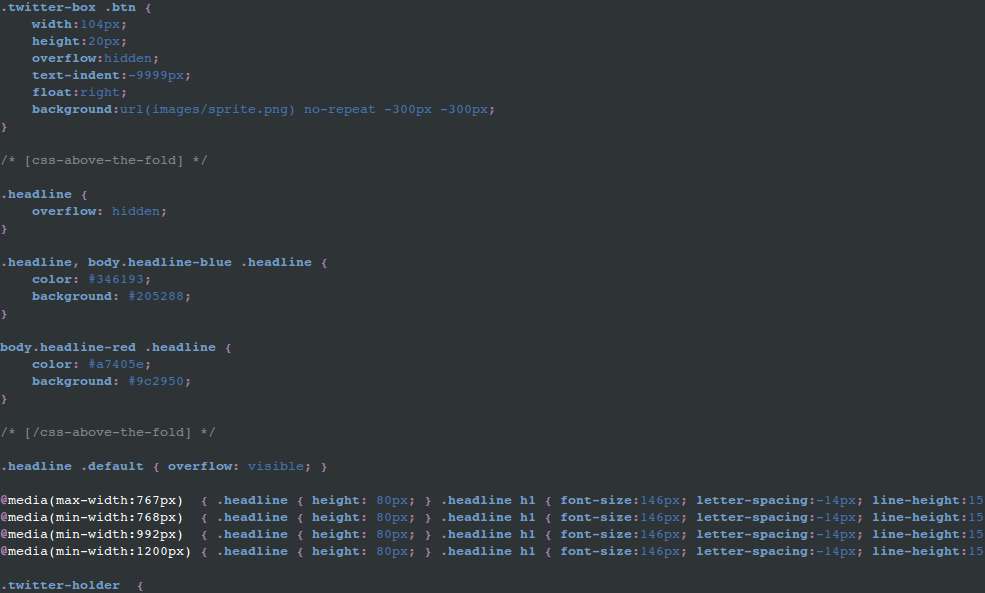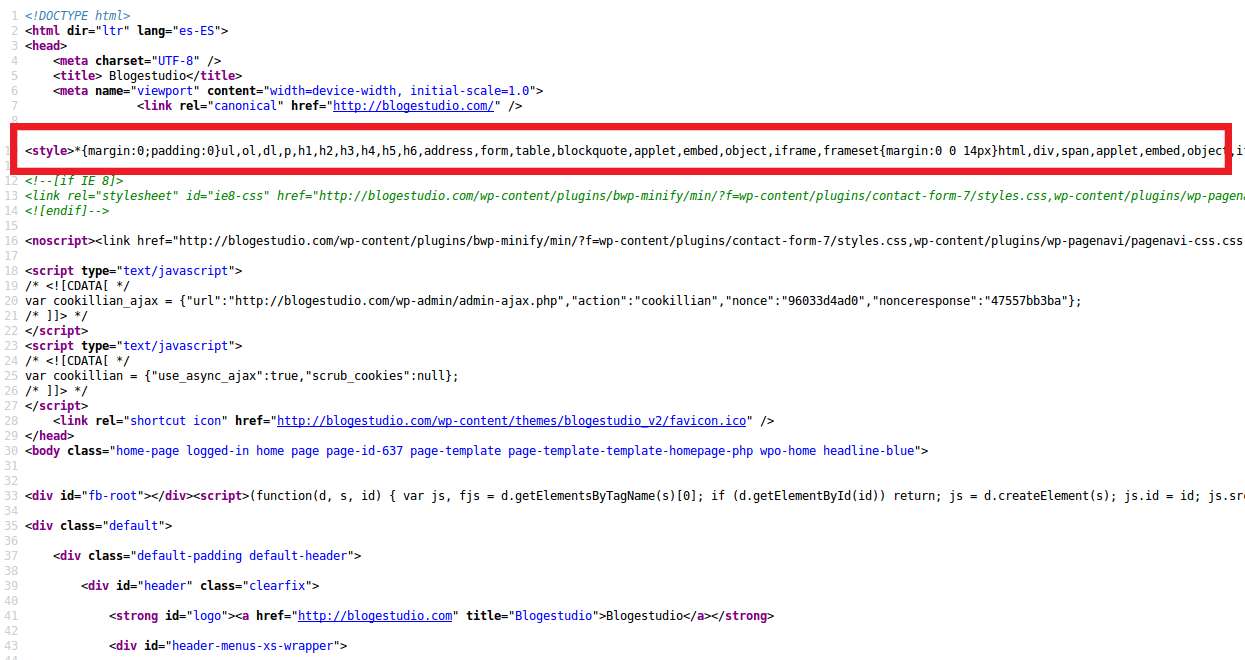Description
Improve user experience by having your above-the-fold (top of the page) CSS styles in-page.
Even if the rest of the CSS files take a seconds to load, these specific CSS styles displayed from the head section ensure a quick rendering of your page and better score in testing systems like Google Page Speed Insights.
But you do not need to maintain two separate stylesheets, just select specific fragments of your theme style file with a special markup to create an above-the-fold styles joining the CSS fragments in the head section.
This plugin enables a special open and close tags that you can insert editing your style.css theme file to surround pieces of code:
[css-above-the-fold]
… Your theme CSS code fragment …
[/css-above-the-fold]
But this syntax is not an standard CSS, so you need to include this tags between CSS comments, there are two ways to do it:
1. Comment whole section
The easiest way, the CSS is rendered only in the head but not in the stylesheet.
This kind of markup does not allow to use your own CSS comments inside the fragment.
Take care to use this way only when the plugin is active, because you are commenting some parts of your theme stylesheet.
/* [css-above-the-fold]
… CSS code fragment …
[/css-above-the-fold] */
2. Comment only the tags
The unobtrusive way, it allows you to include comments inside fragments, but the fragments are rendered both in the head section and the CSS file.
This way is plugin-independent, and your theme stylesheet will keep running with this plugin activated or not.
/* [css-above-the-fold] */
… CSS code fragment …
/* [/css-above-the-fold] */
You can use these two kinds of markup combined in your CSS File.
The resulting CSS fragments introduced in the header are compacted and minified.
This plugin only read the style.css file when it is modified, and stores the results using the WP options API.




